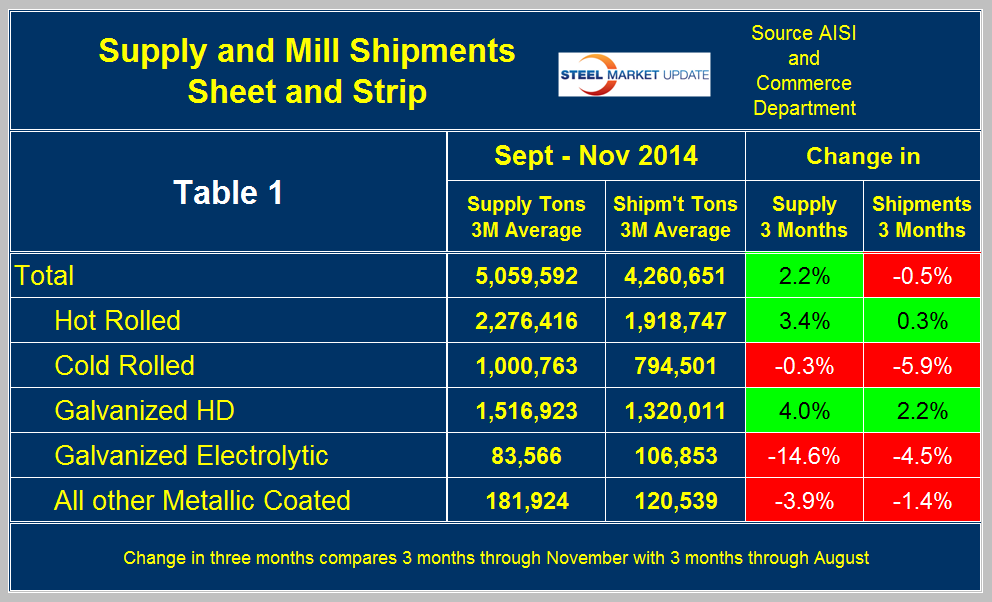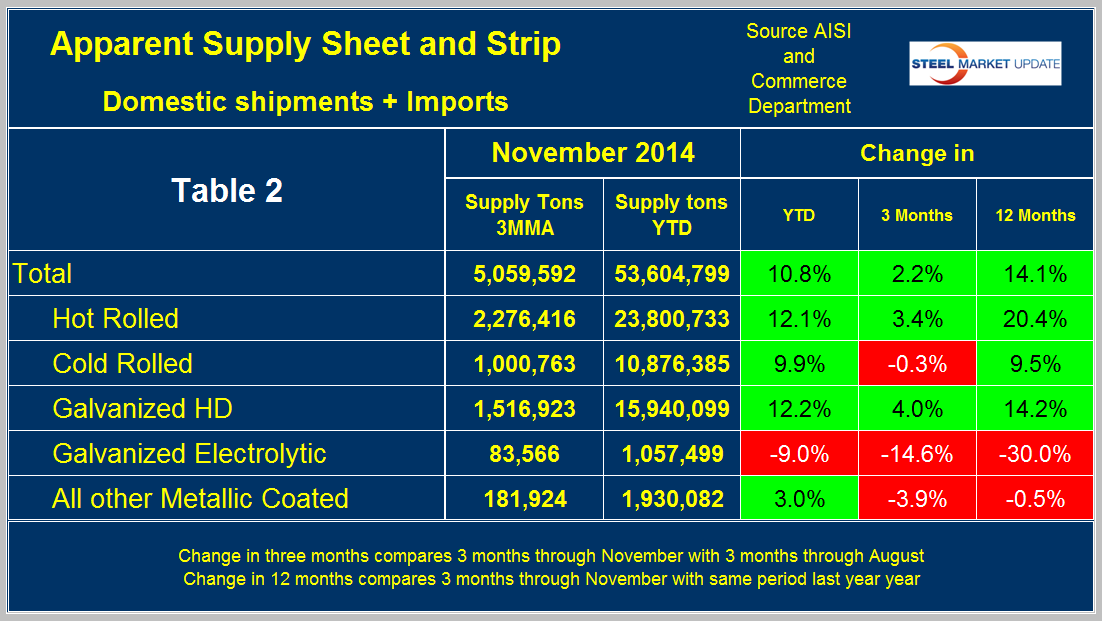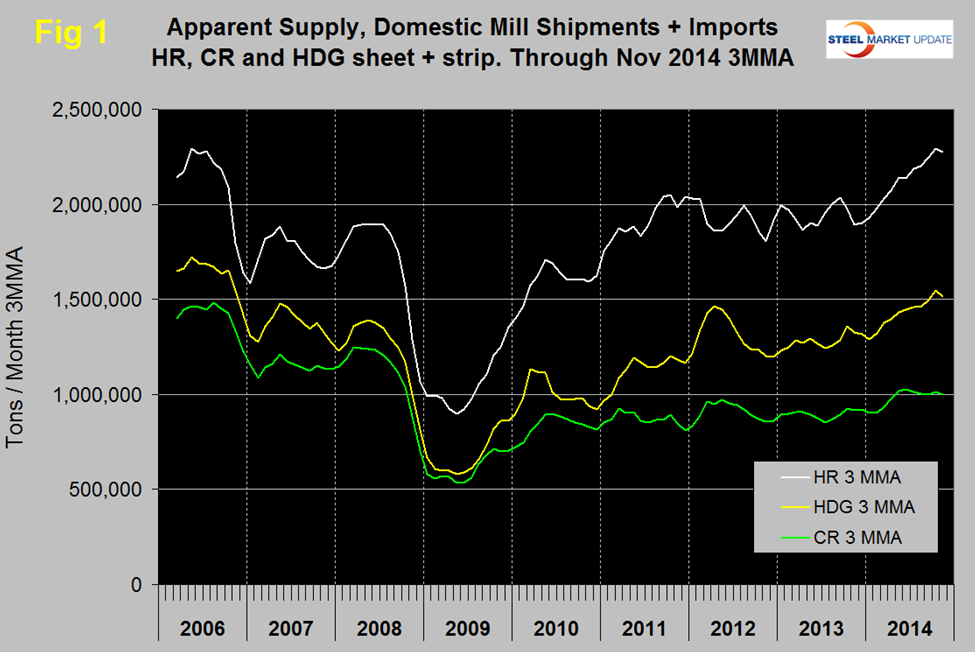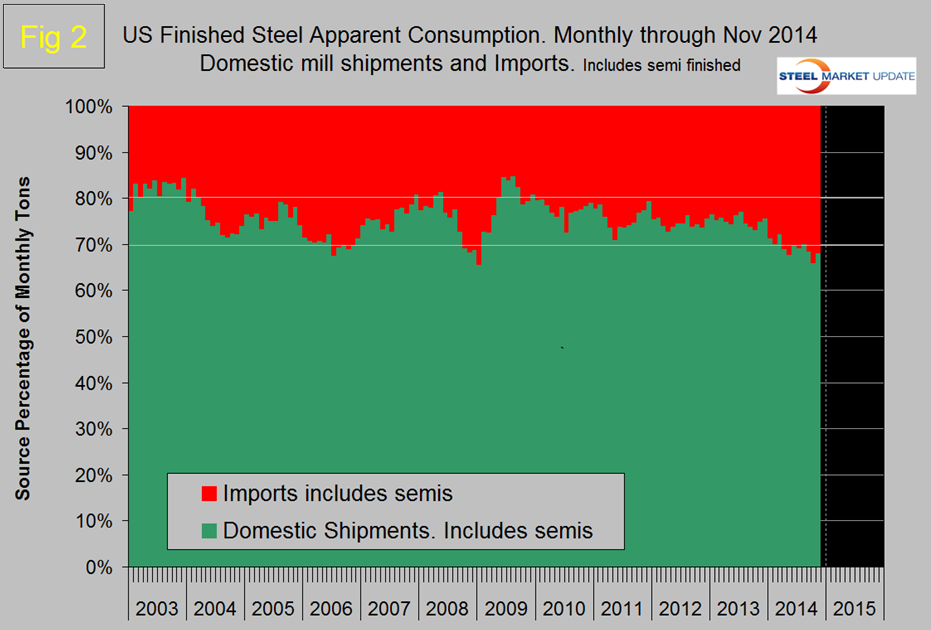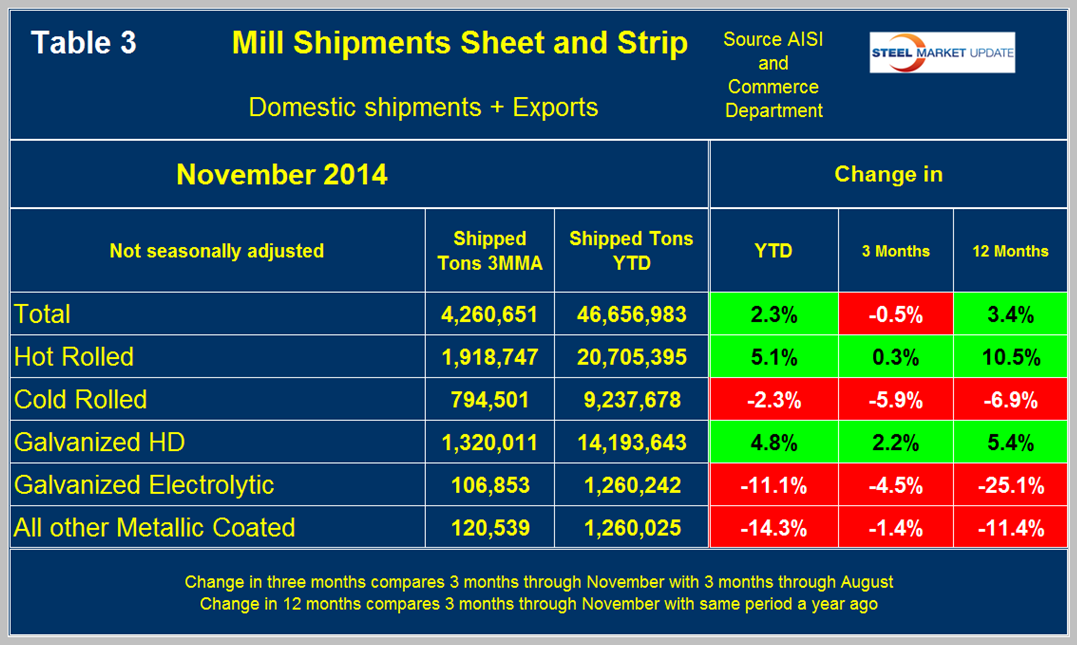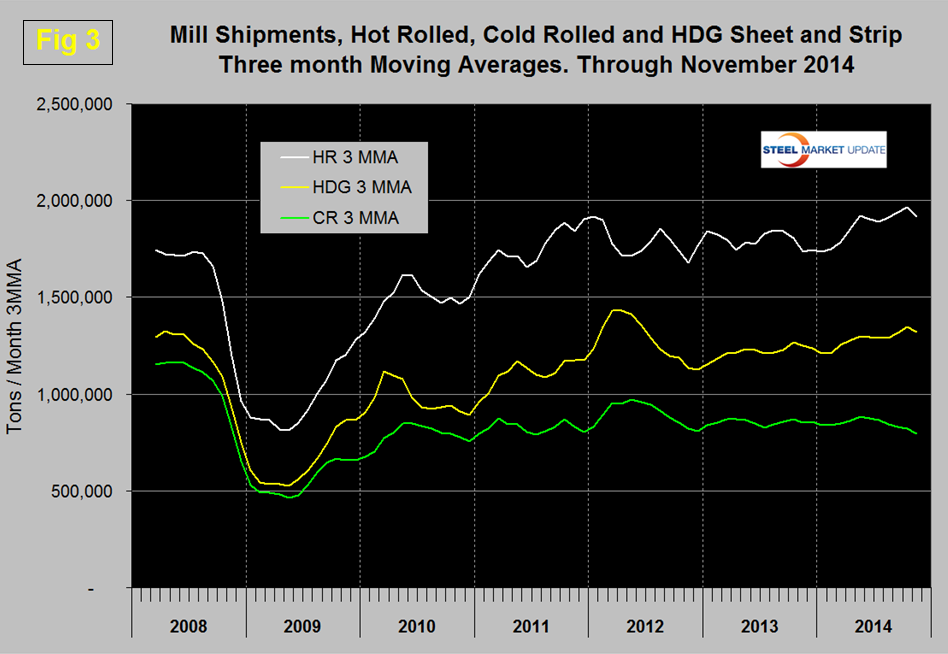Economy

Steel Shipments & Steel Supply Analysis
Written by Peter Wright
January 12, 2015
In previous months we have reported on steel mill shipments and total supply to the market separately in alternate months with reference to imports which account for most of the difference. In future we will report on shipments and supply in one single report to measure the degree to which imports have absorbed the increased market demand. Sources are the American Iron and Steel Institute and the Department of Commerce with analysis by SMU.
Table 1 shows both supply and shipments as a three month average for the periods June through August and September through November 2014. Comparing these two periods total supply to the market was up by 2.2 percent as mill shipments were down by 0.5 percent. In other words, imports took all the market growth and then some! This situation was particularly acute for cold rolled where supply was down by 0.3 percent but mill shipments were down by 5.9 percent. Hot rolled eked out a small, 0.3 percent growth in shipments as supply was up by 3.4 percent. The only products to buck the trend of imports taking a disproportionate market share were electro-galvanized and other metallic coated, (mainly Galvalume) where both supply and shipments were down and shipments were down by less than supply. Now let’s review supply and shipments separately for individual sheet products.
Apparent Supply is a proxy for market demand and is defined as domestic mill shipments to domestic locations plus imports. The three month moving average, (3MMA) of the total tonnage of sheet and strip supply in the period September through November was 5,059,592 tons, up by 10.8 percent from the same period last year and by 14.1 percent from the same period in 2012. Table 2 shows the performance by product over three, twelve and twenty four month periods. In three months through November, supply of all sheet and strip products advanced by 2.2 percent compared to three months through August. All of this growth occurred in HR and HDG, CR, electro-galvanized and other metallic coated all declined. On a YTD basis electro-galvanized also declined year over year as all other products expanded. Year over year hot band grew by 12.1 percent, cold rolled by 9.9 percent and HDG by 12.2 percent.
Figure 1 shows the long term supply picture for the three major sheet and strip products, HR, CR and HDG since January 2006. All three products are in higher demand than at any time since the recession. Hot band was range bound for 2.5 years until April 2014 when it broke out and advanced through October followed by a small decline in November. Cold rolled supply at 1,00,763 tons in November (3MMA) exceeded the million ton level for the sixth time in seven months. Prior to this recent past the last time this occurred was in October 2008 as we prepared to go over the cliff. The supply of cold rolled has been fairly flat since May. HDG had a strong bump in H1 2012, declined in H2 2012 and has been steadily improving for 22 months with a small decline in November. HDG in three months through November averaged 1,517,000 tons per month. These comments refer to three month moving averages and mask the fact that the decline in the single month of November was higher than the seasonal norm.
Supply is both domestic shipments plus imports. The total supply of all sheet and strip products was up by 14.1 percent in September through November year over year as mentioned above but imports took the lions share. On the same time basis mill shipments were only up by 3.4 percent. Imports of total sheet products on the other hand were up by 61.6 percent in September through November year over year on a 3MMA basis. License data for December indicates that imports declined both on a monthly and 3MMA basis but the level is still extremely high.
Figure 2 shows import market share of all steel products including semi-finished. There have been only three periods since 2003 when the domestic mills have commanded less than 70 percent of the market and of those three periods the current one is the most sustained with no sign of a break.
Mill Shipments Table 3 shows that total shipments of sheet and strip products including hot rolled, cold rolled and all coated products were up by 2.3 percent YTD through November compared to the same period last year. In the three months through November compared to three months through August, the total tonnage of sheet and strip shipments was down by 0.5 percent. Comparing YTD shipments for 2014 and 2013 for individual products, hot rolled and HDG were the only products to enjoy a shipment increase. Hot band was up by 5.1 percent and HDG by 4.8 percent. Cold rolled was down by 2.3 percent, electro-galvanized down by 11.1 percent and other metallic coated down by 14.3 percent.
Figure 3 shows the shipment situation by product since January 2008. Of the three major product groups in 2014, hot band is performing best and cold rolled the worst.

Peter Wright
Read more from Peter WrightLatest in Economy

Architecture billings continue to slide in March
Architecture firms said billings continued to decline in March, according to the latest Architecture Billings Index (ABI) released by the American Institute of Architects (AIA) and Deltek.

Beige Book shows concerns about trade policy
Manufacturing was mixed, but two-thirds of districts said activity was little changed or had declined.

New York state manufacturing index drops again in April
Firms were pessimistic, with the future general business conditions index falling to its second lowest reading in the more than 20-year history of the survey

Construction adds 13,000 jobs in March
The construction sector added 13,000 jobs, seasonally adjusted, in March, but tariffs could undermine the industry.

Supply chains, end-users brace for impact from tariffs
Supply chains are working through what the tariffs mean for them

